
Doctors Rocks is a small rocky headland of basalt on the beachfront near where Seabrook Creek enters Bass Strait, behind which an escarpment rises to the north west coast plateau. The terrain forced early road builders to construct a narrow roadway behind the rocks that was the scene of many serious accidents before modern vehicular traffic forced major earth-moving and re-siting of the main road further away from the rocks. The locality is Wynyard’s premier spot to capture a Tasmanian sunset. It is also home to a fairy penguin colony.
More
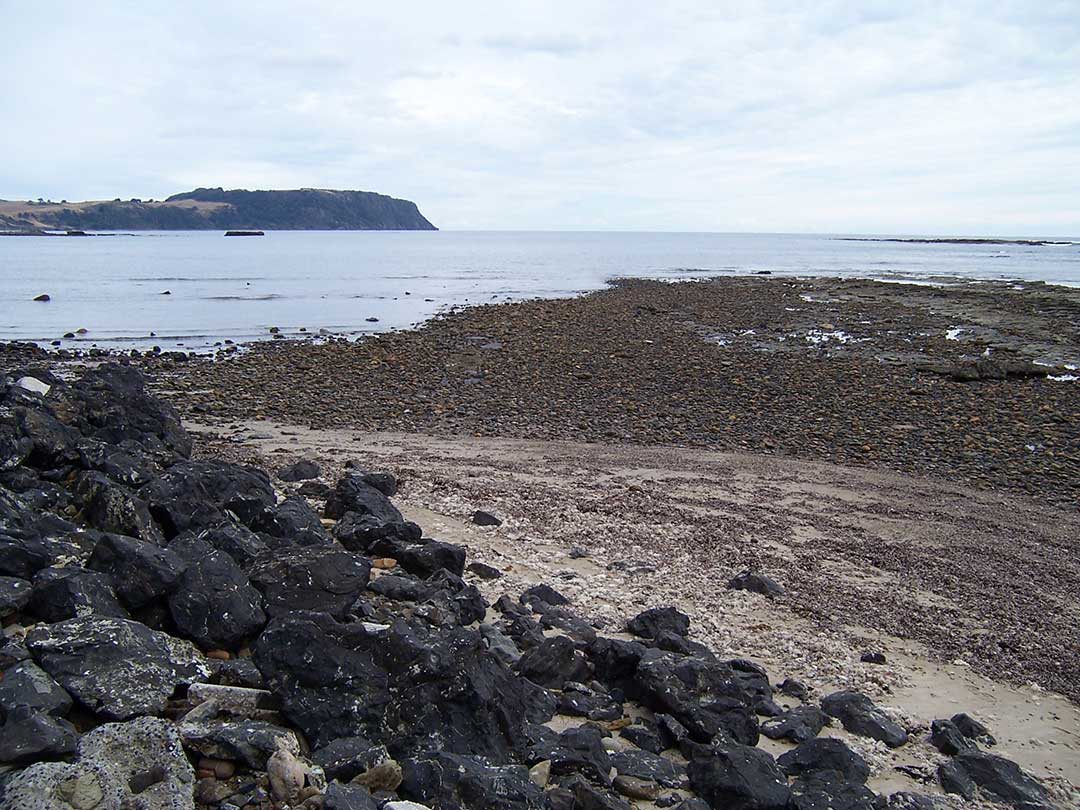
Seabrook or Pines Point popular spot on the Wynyard foreshore to photograph Table Cape. Weathering of the numerous lava flows within North West Tasmania has resulted in both the rich red soils so important to the agricultural industry and very prominent landforms. Seabrook Pines Point is very different to other volcanic activity sites on the North-West Coast in that sedimentary material sits on top of the volcanic material whereas lava flowed over sedimentary layers elsewhere. In layman's terms, it contains many rocks dropped by icebergs.
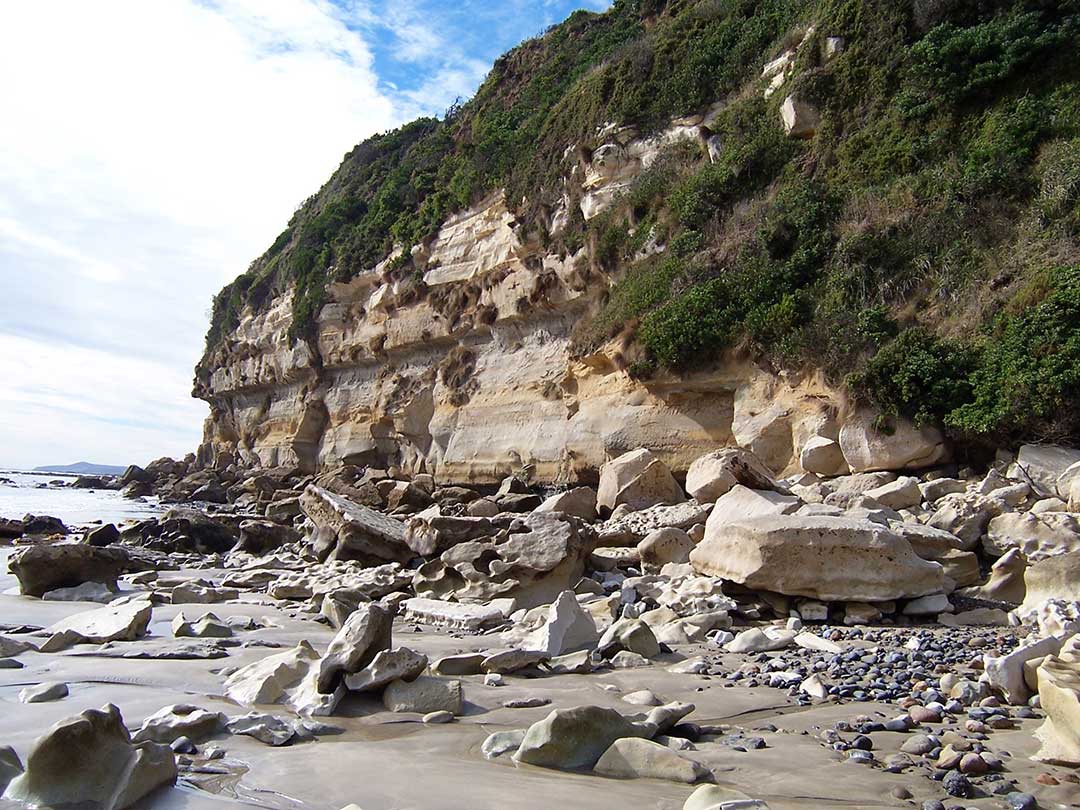
Located between Table Cape and Wynyard, Fossil Bluff is an unusual geological structure comprising glacial Permian Tillite, sandstone and basalt. There is a small beach and the rocks at either end of the beach are characterised by shells which have been caught and fossilised. Embedded into the shore rocks and visible at low tide are Australia's oldest marsupial fossils. The beds of tillite are believed to have been created 275 million years ago, according to the Geology Department of the University of Tasmania. The were formed as boulder clay from a large glacier as the ice melted, and was later consolidated by a load of ice and other rocks on it.
Near high water mark close to the cliff face of Fossil Bluff there are many blocks of very fossiliferous sandstone or siltstone, which have fallen from the cliffs above. The cliffs contain a succession of light coloured rocks, scarcely consolidated sands and limey silts which were deposited on a beach and in a shallow bay some 22 million years ago. Please note that collecting is not permitted in the Conservation Area.
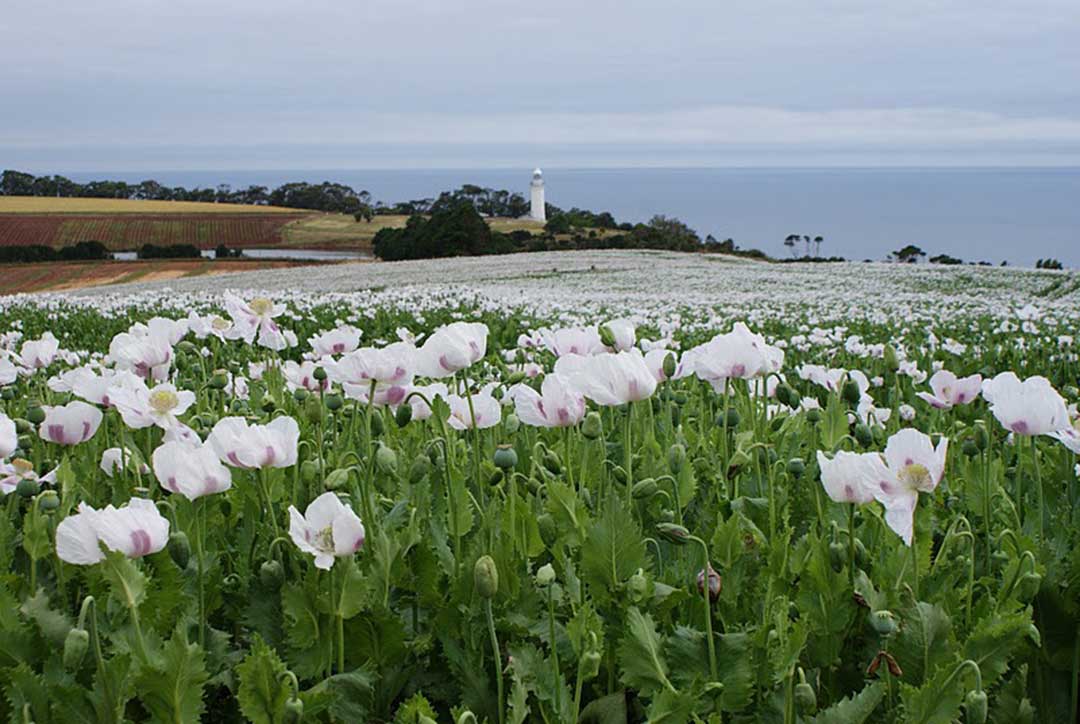
This striking landform is composed of basalt lava likely to formed as a crater-filling lava lake. The lava would have been ponded by granular material forming the slopes of the volcano but which has now largely eroded away. Related flows on the landward side have been dated at 13.3 million years (Miocene). Driving to the top, when you reach Murdering Gully Road (one wonders what happened to evoke that name!), continue on Tape Cape Road past the tulip farm. You then have a choice of taking a left turn to the lighthouse or going straight ahead to the lookout. Matthew Flinders sailed in their sloop 'Norfolk" through Bass Strait, and named the large promontory Table Cape, which has now become the local landmark.
More

Follow the signs to Boat Harbour Beach and as you wind your way down a hillside and a superb white beach with rocky headlands on either side comes into view. The sea is green and blue, the beach so clean, houses dot the hillside, the whole scene unfolding before your eyes is sleepy and peaceful. This may well be the most beautiful seaside village and beach in Tasmania. Furthermore, it exists in a micro-climate which is removed from the surrounding weather patterns. Frosts are unknown and plants from the tropics can be seen in local gardens. It sounds like paradise.
More

On your way into Boat Harbour Beach you will notice a sign pointing to Sisters Beach. Though just up the road (and the coast) from Boat Harbour Beach, Sisters Beach has a totally different look and feel. A quiet seaside village which extends some way along the waterfront, Sisters Beach is actually located within the Rocky Cape National Park and is situated on the old horse trail known as the Postman's Track that once formed the only connection between Emu Bay (now Burnie) and the Van Diemen's Land outpost of Stanley.
More

Rocky Cape National Park offers a fascinating variety of walks, ranging from less than 20 minutes to a full day. These take in Aboriginal rock shelters and caves, scenic hills full of wildflowers and birds, and tranquil beaches, bays and rocky headlands. From Sisters Beach there is a one hour walking circuit to Wet Cave, Lee Archer Cave, returning via Banksia Grove, a stand of giant Banksia serrata. Sisters Beach is the only place in Tasmania where they occur.
Although small, Rocky Cape National Park offers visitors a varied experience on Tasmania 's coast. Here you can learn about Aboriginal life on the north-west coast. Swimming, fishing, boating and walking are popular activities. There are pleasant day and half-day walks over the hills from either Sisters Beach or from the lighthouse at the western end of the Park. Rocky Cape's unpolluted waters regularly attract dolphins and seals. At low tide on a calm day, the rocky foreshore reveals numerous rock pools inhabited by a variety of colourful fish and plants. Within the park there is a picnic area with tables and a gas barbecue at Mary Ann Cove. Toilet facilities are available at Burgess Cove and Mary Ann Cove in Rocky Cape National Park. Drinking water is not available in the park.
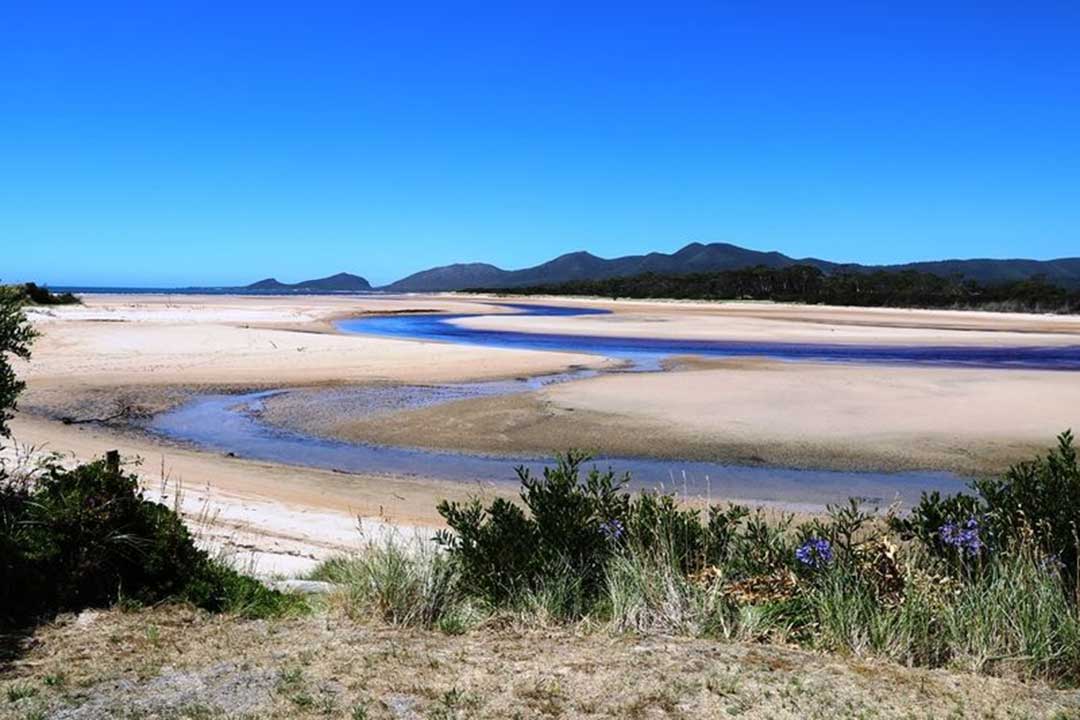
Detention River lies about a five minutes drive west from the Rocky Cape turn off. It is a picturesque spot where erosion continues to threaten homes, and is now threatening the foreshore as well. It's popular for beach fishing, the with a few species of fish that can be targeted by the shore angler. They include sea-run trout, Australian salmon and flathead. Spinning for sea-run trout and salmon towards the mouth is the most common form of fishing. These fish can be caught further up the estuary when the tide is full.
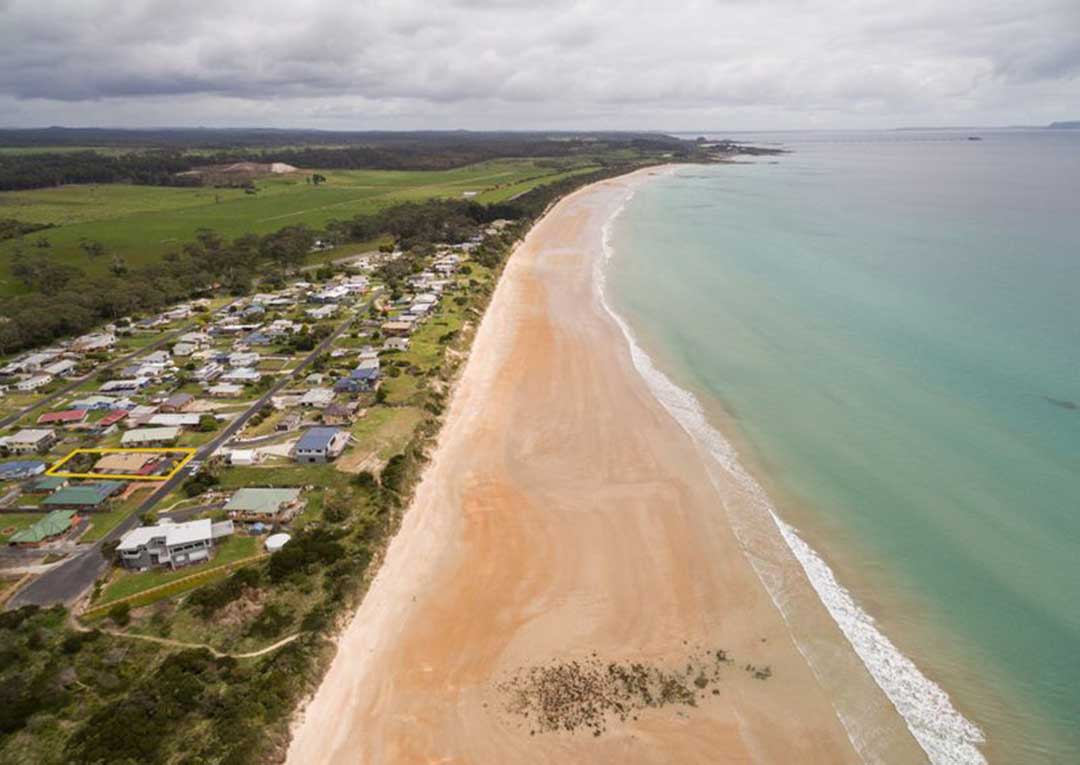
A 2.5 km long slightly curving north-northeast-facing sandy beach, bordered by low rocky points and platforms in the west and the shallow mouth of Pebbly Bay and the Detention River in the east. Most of the area between the highway and beach is a coastal reserve. The small settlement of Hellyer is located at the eastern end of the beach between the highway, beach and bay. The highway crosses Detention River 800 metres in from the mouth and then trends southeast, not nearing the coast again until Boat Harbour 18 km to the east.
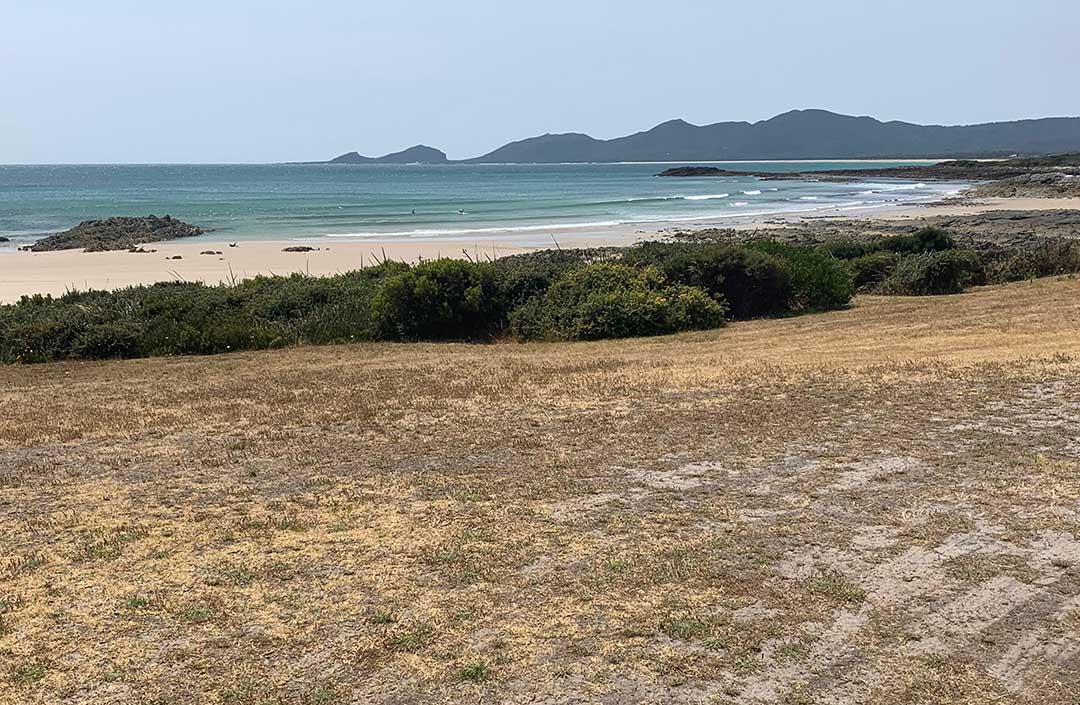
Home to a beachside holiday community, at the extremities of the beach are some interesting volcanic rock formations. Interbedded siltstone and mudstone was deposited between 750 and 1000 million years ago and folded around 510 million years ago. In places these have been intruded by dolerite dykes that might be about 700 million years old. It has a good shore platform exposure of rocks that underlie much of northwest Tasmania.
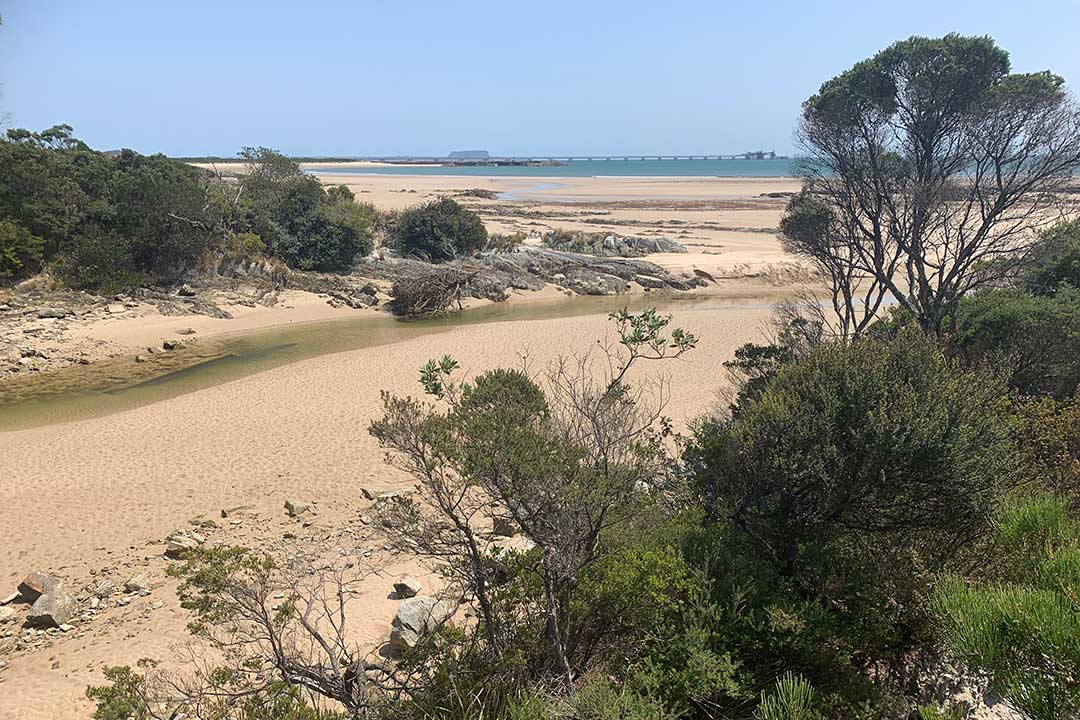
The name conjures up images of the Giant Tasmanian crayfish which inhabit the inland waterways of the North West and gave the creek its name. The settlement, set around the beach where Crayfish Creek enters Bass Strait, consists of an older-style resort and a collection of holiday shacks. From the beach there are view towards the Port Latta iron ore facility and Circular Head beyond. The creek was named by Henry Hellyer, Architect and Surveyor of the Van Diemen's Land Company, when he caught crayfish there during an exploratory expedition in 1827.
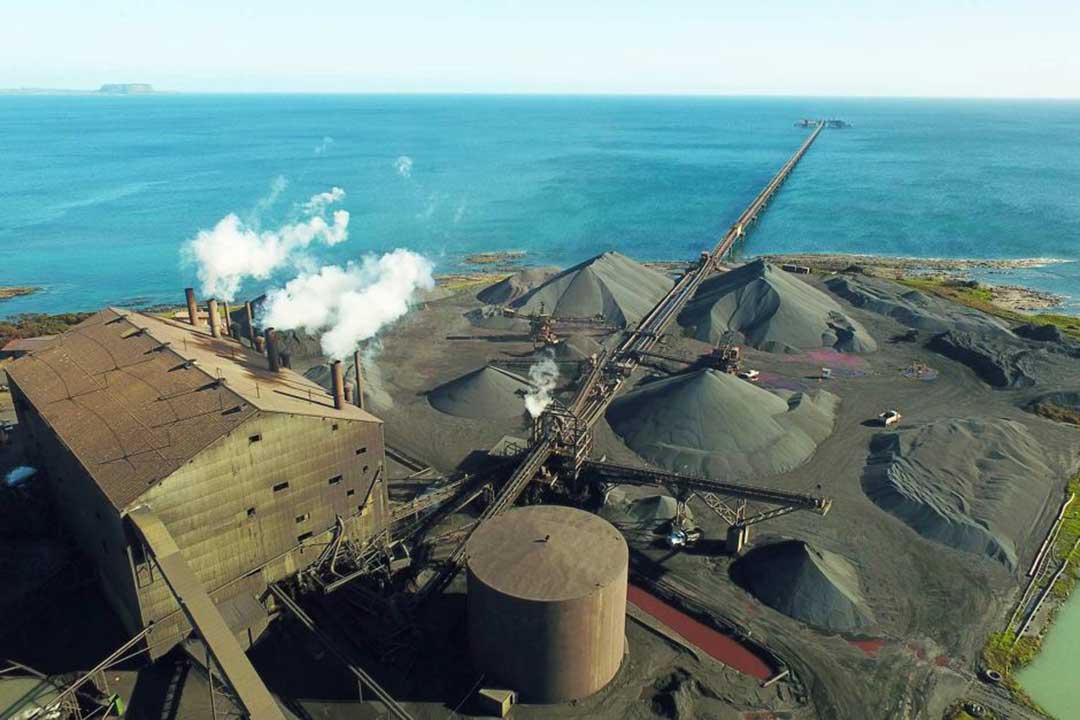
Originally known as Cowrie Point. Latta is the native name for iron ore. It was chosen because Port Latta was established as the location for an iron ore pelletising plant and port from which iron ore mined at Savage River is exported.
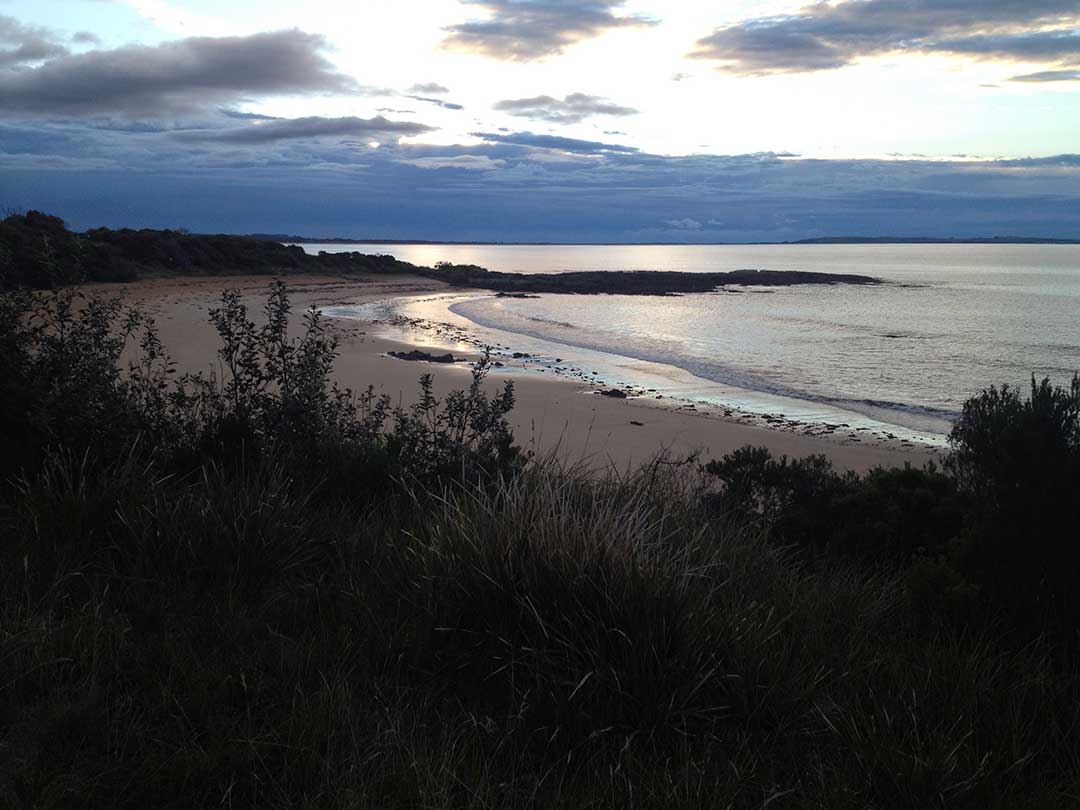
A pretty spot, and a great place to view the sunset over Bass Strait. It has a curving 250 m long north-facing beach bordered by low rocky points. It is backed by a narrow band of scrub, with a car park and small picnic and camping reserve at the western end of the beach and the highway immediately behind the eastern end.
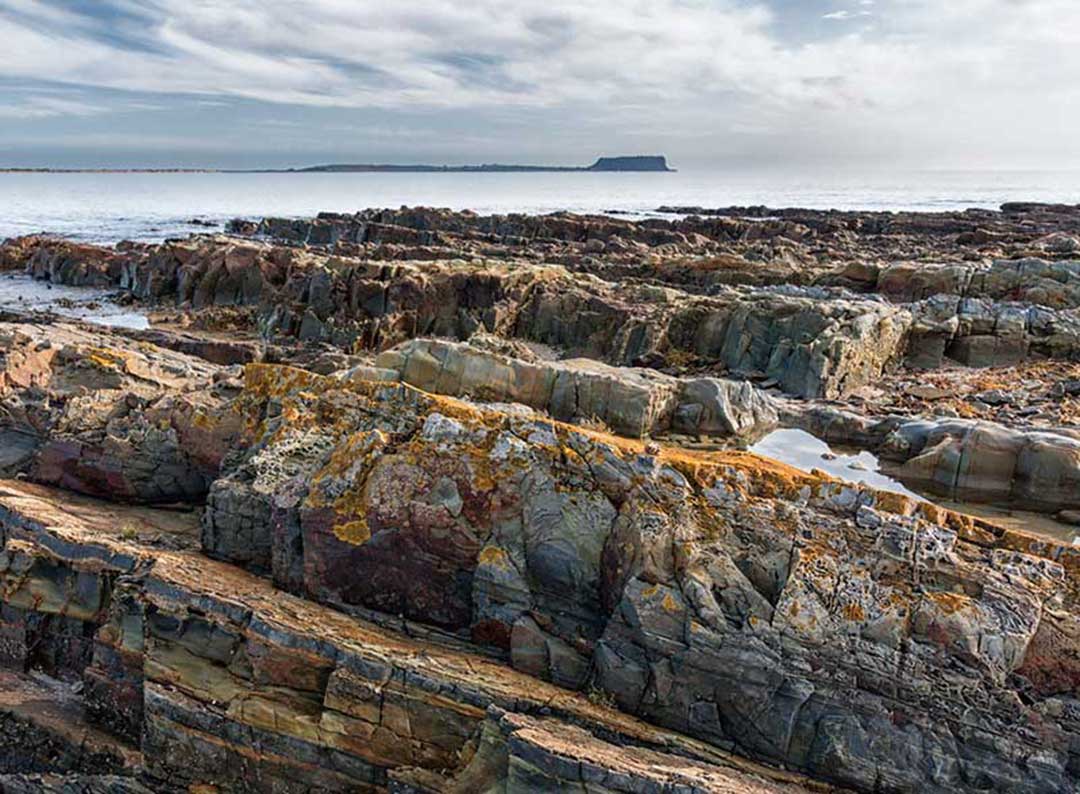
Geologically, you'll see fretwork and honey comb weathering of the rocks; hyllite and slate sequences in tilted rocks, highly sculptured with evidence of iron and minerals. The interbedded siltstone and mudstone were deposited between 750 and 1000 million years ago and folded around 510 million years ago. In places these have been intruded by dolerite dykes that might be about 700 million years old. Good shore platform exposure of rocks that underlie much of northwest Tasmania.
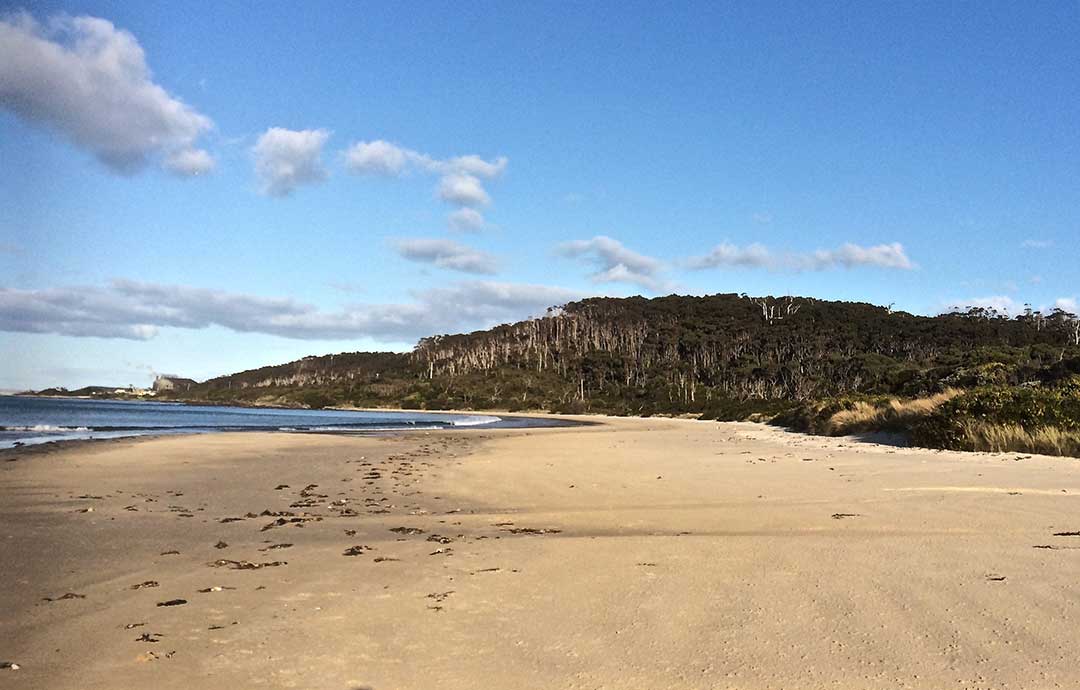
Peggs Beach commences on the southern side of the sandy Black River mouth and curves slightly to the southeast for 3.5 km, terminating at a low rock reef. The highway clips the eastern end of the beach where there is a campground and park in lee of the boundary reef. The road then follows the rear of the ridges, before turning inland to cross the Black River 1 km in from the mouth. The whole beach and barrier system is contained within the 208 ha Peggs Beach Coastal Reserve.
Little Peggs Beach is an eastern continuation of the longer Peggs Beach, with a 100 metre long cluster of low rocks and reefs separating the two, most of which are exposed at low tide.
Geologically, the Peggs Beach rocks area is an unconformity, i.e. a geological contact at which underlying and overlying layered sedimentary rocks of different ages meet at an angle (here about 22 degrees). The older, lower siltstone formation, about 1200 million years old, has evidently been uplifted, slightly tilted, planed off by erosion, and overlain by the younger formation, of conglomerate and quartzite, about 750 million years old. Best visited at low tide.
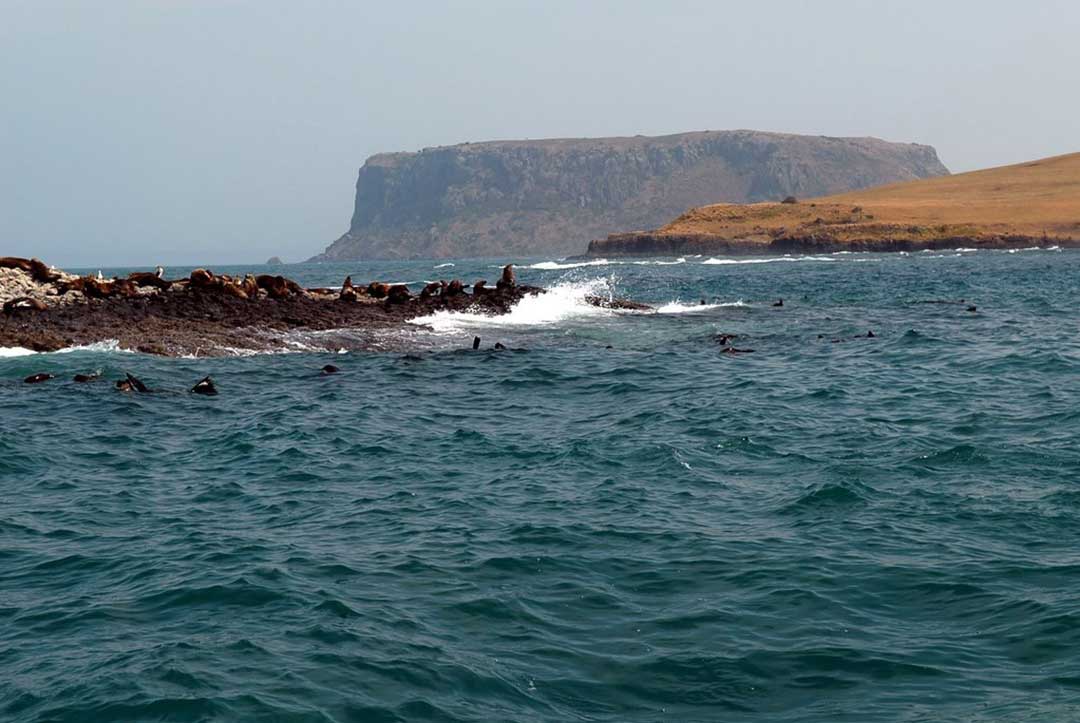
The Nut (152 metres high) is the dominating feature of Circular Head, named by George Bass and Matthew Flinders in 1798 during the first circumnavigation of Tasmania. It was selected as the headquarters for the Van Diemen's Land Company in the 1820s. The Nut is in fact the solidified lava lake of a long extinct volcano. Visitors can walk up a steep challenging path to the summit or take a leisurely chairlift ride. Either way, 360-degree views await as far as the eye can see.
More
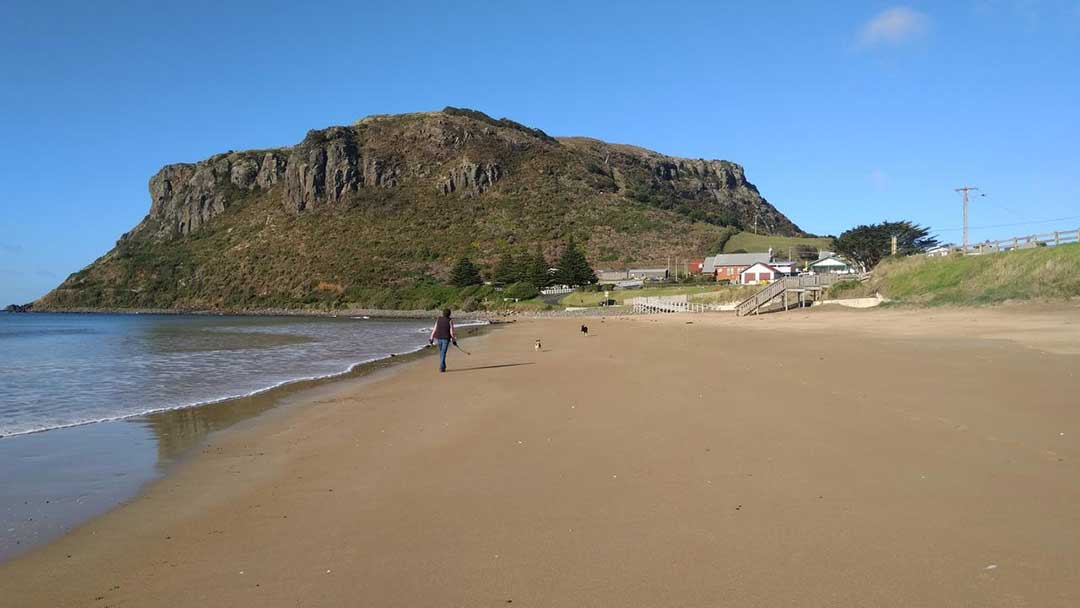
Godfreys Beach is a curving 1.1 km long east-facing beach, which is protected from the strong westerly winds. There are prominent rocky headlands at each end and an extensive rock reef off the northern end of the beach. Features include a large car park, playground, amenities block and sailing club at the southern end. Godfreys is a generally low hazardous beach, however waves breaking at low tide can produce strong rips.

Tatlows Beach is tied to the southern side of The Nut, with Stanley located on the 600 metre wide isthmus in between. This beach faces east into the open Sawyer Bay. Waves break over the tidal shoals resulting in a low energy beach, however strong tidal currents flow though the inlet and out into the bay. Strong westerly winds are great for windsurfing, but can blow people on flotation devices out to sea, so watch children particularly at low tide and on windy days. The beach is backed in the north by the town, caravan park and golf course.
Its name recalls the head of the pioneer wheelwright and blacksmith, Anthony Tatlow (1832-1885), who came to Tasmania from County Cavan, Northern Ireland as an infant. His wife, Hannah Tatlow, nee Burke (1846-1918), was also from Northern Ireland. They had eight children, ran coaching and hotel businesses and were well-loved members of the Stanley community. The beach was the scene of the stranding of 300 whales in 1935.
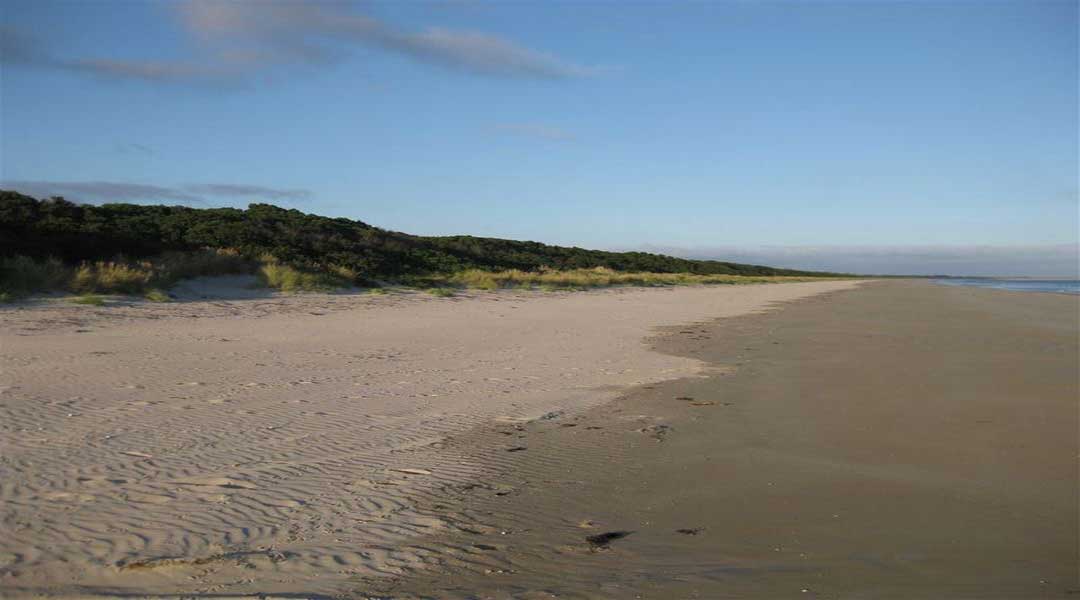
Anthony Beach commences at Eagle Point on the eastern side of Duck Bay and curves to the east for 13.3 km to 500 m wide West Inlet, where a deep tidal channel and tidal shoals extend 1 km off the inlet. This beach is backed by a continuous well developed foredune ridge plain which widens from 400 m at the ends to 700 m in the centre where there are up to 50 m low, closely spaced ridges. The island is linked to the mainland in the centre, with a 4 km road from the Bass Highway terminating at a beachfront car park in the centre of the beach. Duck Bay backs the western 5 km of the island, while West Inlet backs 3 km of the eastern end, with generally low marsh in between.
Locally and originally known as Seven Mile Beach - it was changed because of duplications. The Anthony family lived for many years in vicinity of beach.
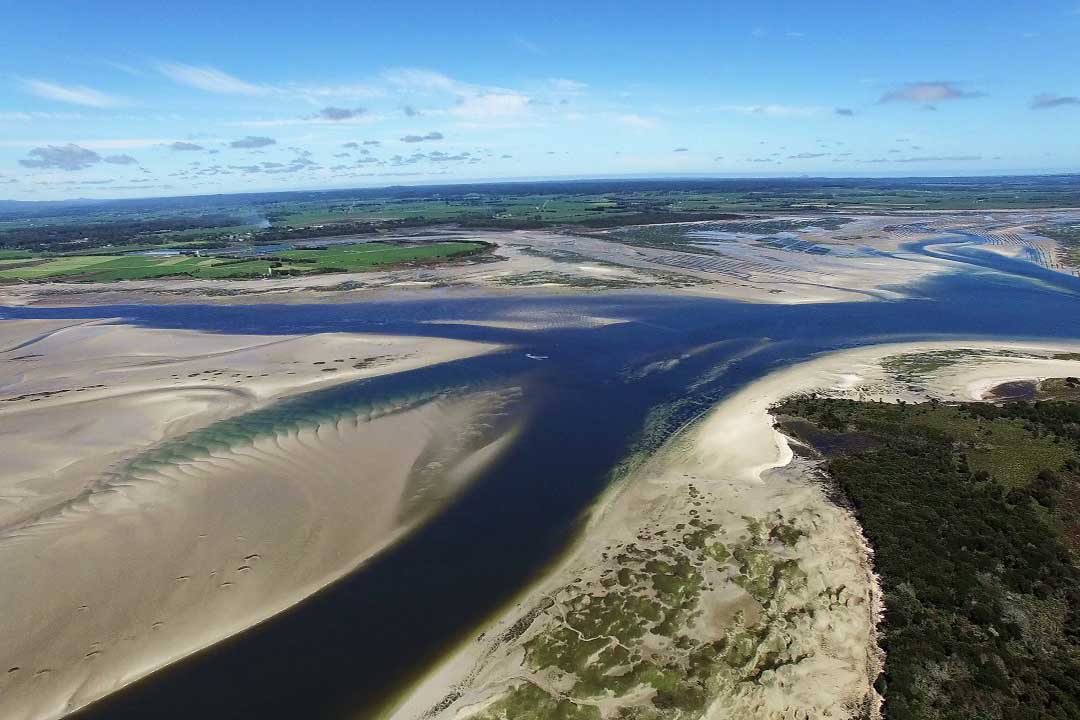
Duck Bay is the large bay on which the town of Smithton stands. Duck River flows through the town of Smithton, before discharging into Duck Bay and then into Bass Strait. Duck Bay has a reputation for providing high quality oysters in November to April when supply is usually scarce throughout Australia. Tasmanian oysters were introduced from Japan in 1946.
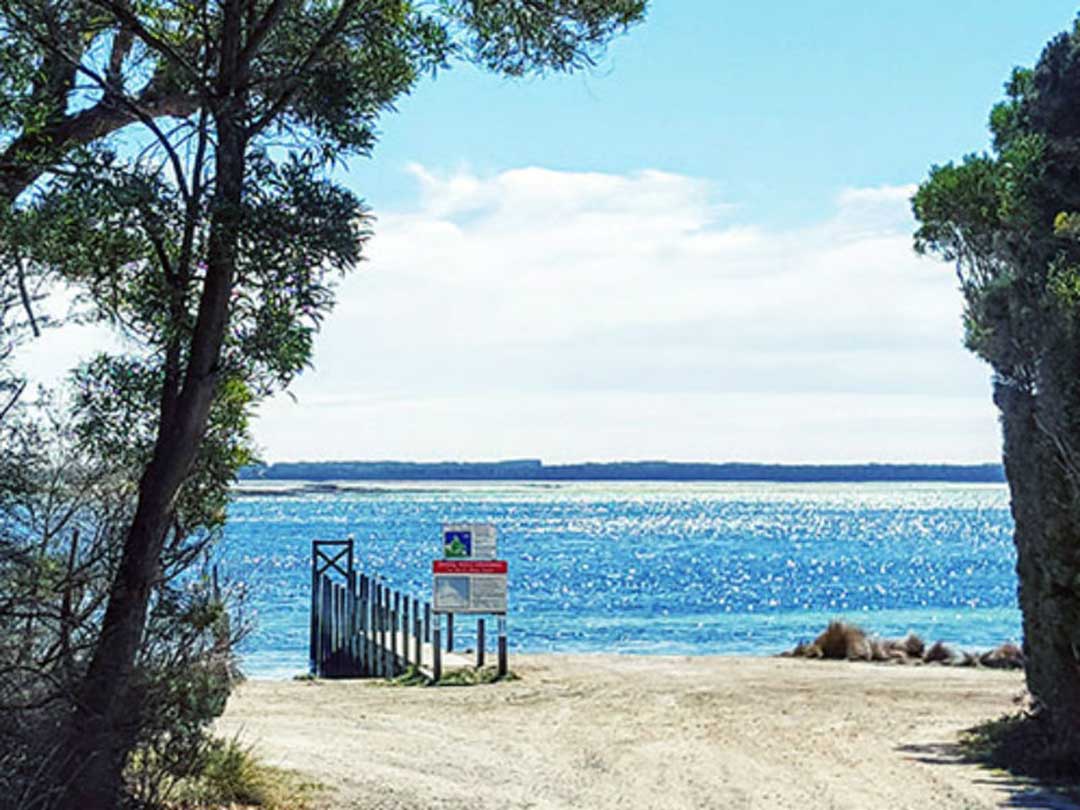
The Montagu Park Recreational Reserve is located near the Robbins Island Passage, some 29kms drive from Smithton. It has an excellent campground, is spacious and offers excellent opportunities for fishing or simply relaxing. The camping area is only open from 1 November to 30 April. Caretaker on-site to collect fees. Phone: (03) 6452 1181. location: 380 Old Port Rd, Montagu.
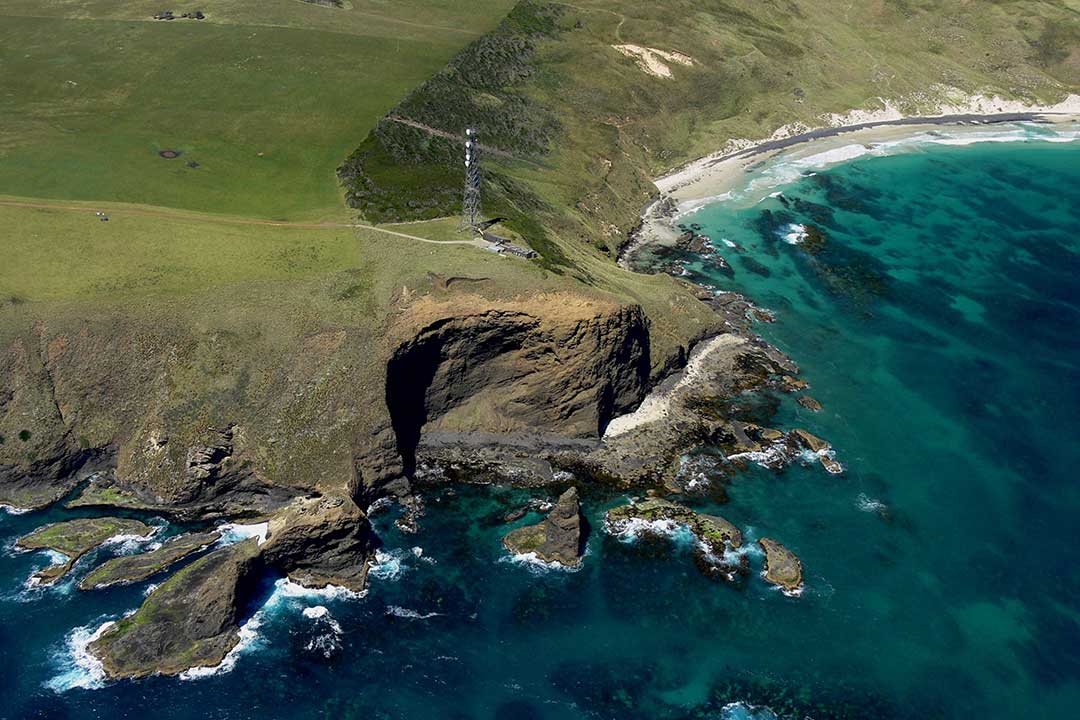
The name is taken from the property of the historic Van Diemen's Land Company of which it is a part. Woolnorth Point is the extreme tip of Cape Grim, the northwestern point of Tasmania. The Peerapper name for the cape is recorded as Kennaook. It is the location of the Cape Grim Baseline Air Pollution Station which is operated by the Australian Bureau of Meteorology in a joint programme with the CSIRO. Two small beaches occupy the western side of the point. A vehicle track crosses the point to reach the southern end of the beach. Both beaches are backed by generally dense scrub.
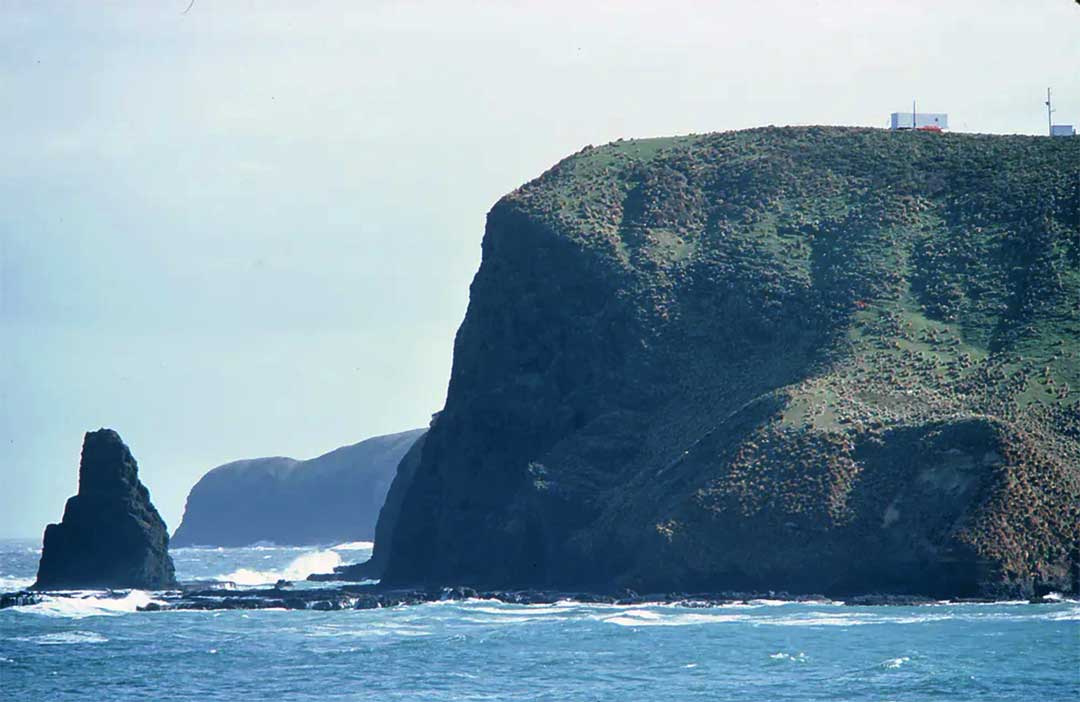
What makes Cape Grim unique is its isolated geographic location. Being the extreme tip of the north-west corner of Tasmania, the next land mass directly west of Cape Grim is not Africa (it's too far south), but the southern tip of Argentina. As a result, Cape Grim is believed to have the cleanest air in the world. Cape Grim is home to Woolnorth, the dairy farm operated by one of Australia’s oldest companies, The Van Diemen’s Land Company (VDL). The property is still under Royal Charter. VDL was established by royal charter in 1825, encouraged by Tasmania’s ability to raise fine-wool sheep in the 20 years since its settlement.
Cape Grim and the Doughboys were the site of intraplate basaltic volcanism about 24 million years ago. Exceptionally well preserved examples of submarine pillow lavas, sills, oblate lavas, volcanic breccia and tuff are exposed in rock platforms and steep coastal cliffs. Please note there is no private access to this site. Please contact the Stanley Visitor Information Centre for tour options.

The mis-named Suicide Bay at Cape Grim was the scene of the events of 10 February 1828 in which a group of Aboriginal Tasmanians were ambushed and shot by four Van Diemen's Land Company (VDLC) workers, with the bodies of some of the victims then thrown from a 60-metre cliff. About 30 men are thought to have been killed in the attack, which was a reprisal action for an earlier Aboriginal raid on a flock of Van Diemen's Land Company sheep. The escalating spiral of violence was probably triggered by the abduction and rape of Aboriginal women in the area. The massacre was part of the "Black War", a period of violent conflict between British colonists and Aboriginal Australians in Tasmania from the mid-1820s to 1832.
The Cape Grim Massacre
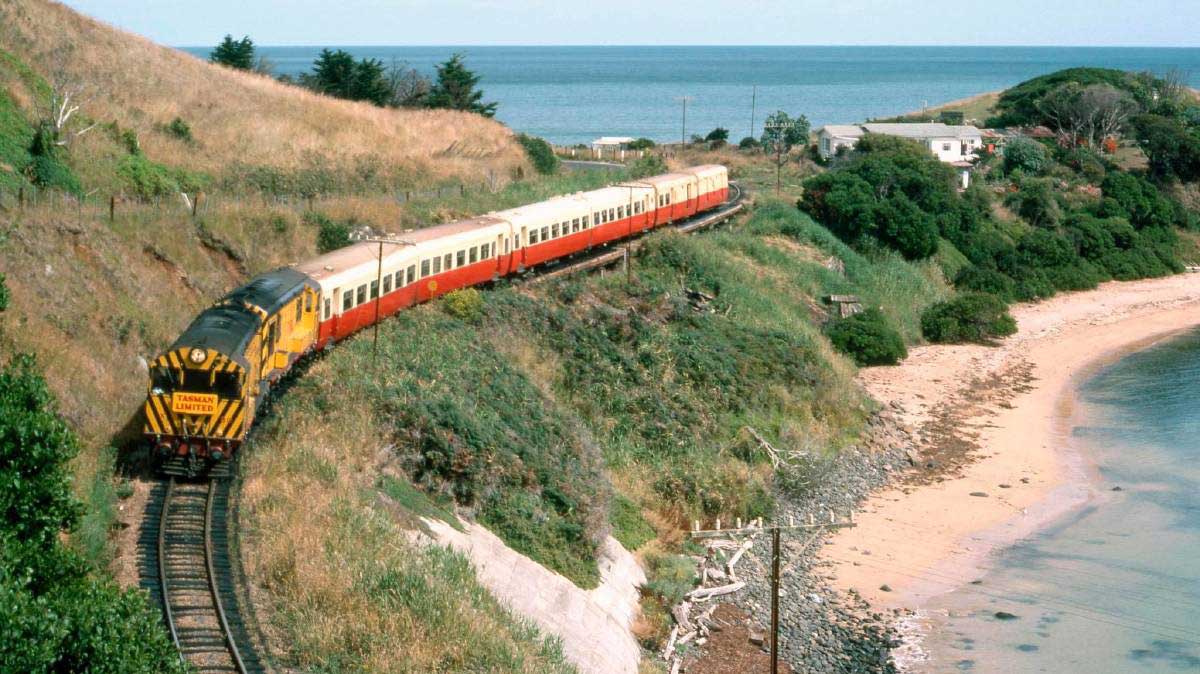
Though there are no passenger services on the line today - in fact the line now stops at Burnie - there was once a passenger train which ran from Wynyard to Launceston, and then on to Hobart. Called the Tasman Limited, the service started in 1954 running from Hobart to Launceston to Wynyard, with 26 stops in between, and ended in 1978. It was considered the state’s great luxury passenger train.”
The patriarchal, eight-hour train service allowed Tasmanians, especially those living in regional areas, to travel and see other places in the state. It was very comfortable for its time, there was a buffet car to get something to eat, and people really enjoyed the trip. The train used to carry a name board, so the Hobart to Launceston was called the Tamar and the Launceston to Wynyard was called the Table Cape, but going Wynyard to Launceston it was called the Launcestonian, and when it left for Hobart, it changed to the Derwent,” Mr Brun said.
Toni-Anne Carrol worked the Wynyard to Western Junction line. Her most vivid memory of the train was when it derailed near Campbell Town; passengers were loaded onto a bus, driven across paddocks and fed at the Campbell Town pub, before being driven to Hobart. “I was 19 and it was my first year of uni - there was no warning, just a massive thud and over we went. I went flying from my window seat.” Carol later worked on the Tasman Limited as a hostess and was famous for her amusing commentary, and everyone used to mimic it.
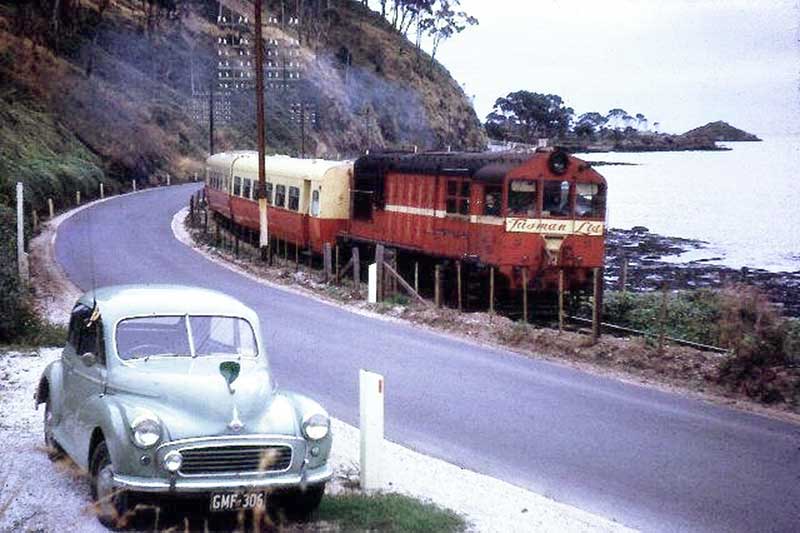
The Tasman Limited was very well patronised in the ‘50s and ‘60s but by the 1970s everyone was traveling in cars and the train became unnecessary. During its most popular time the train is believed to have carried up to 200 passengers, but towards its end, numbers dwindled to around 15 passengers per trip.
In common with many railway systems, Tasmania's was of necessity exploited by overuse and under-maintenance during the Second World War. By the 1970s passenger patronage was in such decline, there was insufficient revenue being generated to warrant upgrading Tasmania's passenger trains, and a decision was made to withdraw the service. The last passenger train from Wynyard to Hobart ran on 18th July 1978. The the ABC studios have been built on the site of the former Hobart railway station. Much of the passenger rolling stock went to the Tasmanian Railway Museum at Glenorchy, with some going to the Don River Preservation Railway based in Devonport.